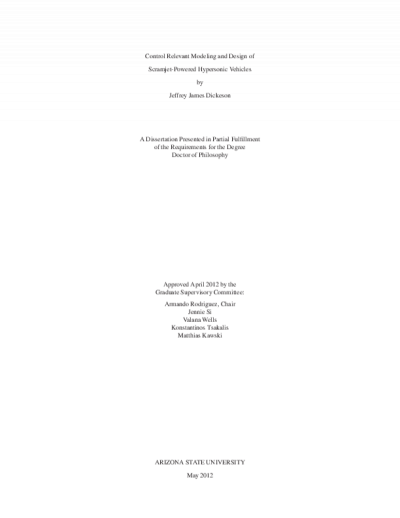Multidisciplinary optimization for the design and control of uncertain dynamical systems

Description
This dissertation considers an integrated approach to system design and controller design based on analyzing limits of system performance. Historically, plant design methodologies have not incorporated control relevant considerations. Such an approach could result in a system that might not meet its specifications (or one that requires a complex control architecture to do so). System and controller designers often go through several iterations in order to converge to an acceptable plant and controller design. The focus of this dissertation is on the design and control an air-breathing hypersonic vehicle using such an integrated system-control design framework. The goal is to reduce the number of system-control design iterations (by explicitly incorporate control considerations in the system design process), as well as to influence the guidance/trajectory specifications for the system. Due to the high computational costs associated with obtaining a dynamic model for each plant configuration considered, approximations to the system dynamics are used in the control design process. By formulating the control design problem using bilinear and polynomial matrix inequalities, several common control and system design constraints can be simultaneously incorporated into a vehicle design optimization. Several design problems are examined to illustrate the effectiveness of this approach (and to compare the computational burden of this methodology against more traditional approaches).
Date Created
The date the item was original created (prior to any relationship with the ASU Digital Repositories.)
2014
Agent
- Author (aut): Sridharan, Srikanth
- Thesis advisor (ths): Rodriguez, Armando A
- Committee member: Mittelmann, Hans D
- Committee member: Si, Jennie
- Committee member: Tsakalis, Konstantinos S
- Publisher (pbl): Arizona State University



